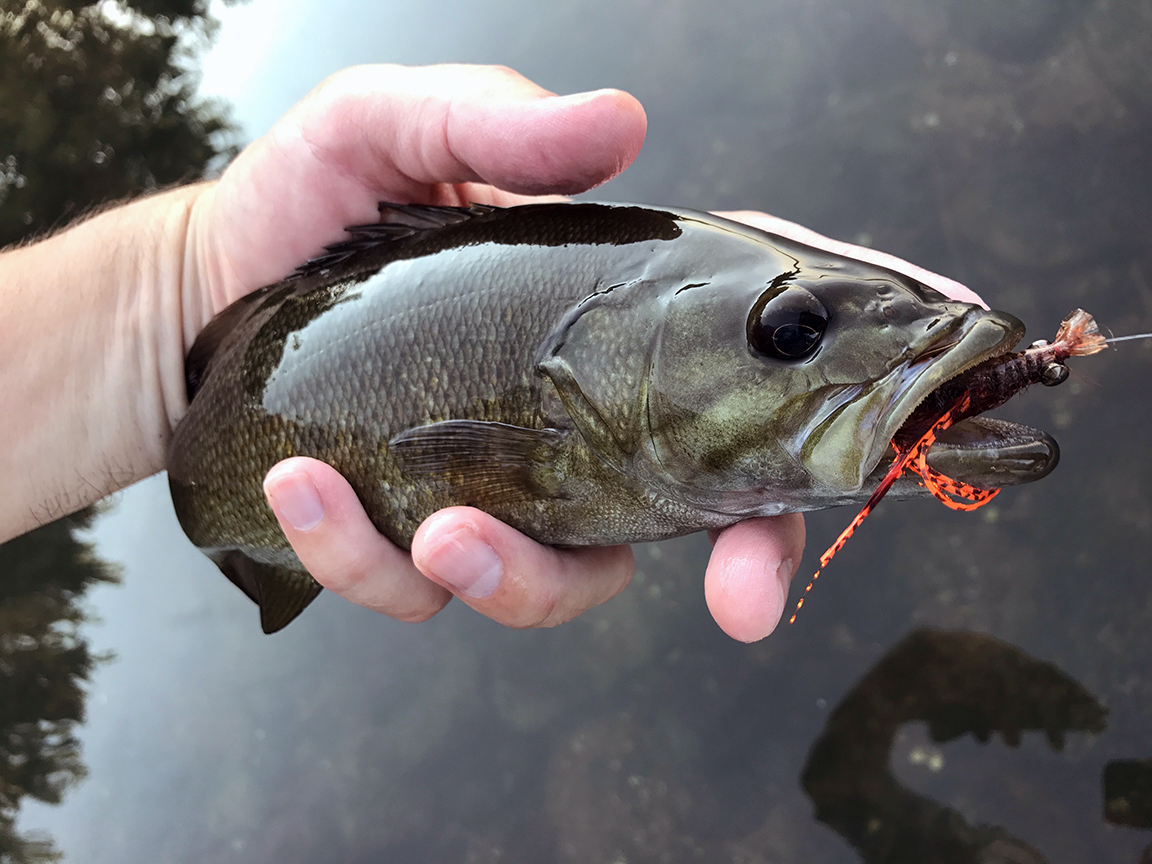I wanted to fly fish for smallmouth bass all summer and due to either high water or being distracted by trout, it turned to fall and I didn’t make it out. On Sunday I had an opportunity to get out and fish in the afternoon. I checked the USGS gauges on the Susquehanna River (“Susquehanna”) and the flows were perfect for wading, I finally had my chance. I’ve fished many different parts of the Susquehanna for bass throughout my fishing career, but Sunday afternoon I decided I’d focus on familiar water.
I grew up in Elizabethtown, which is only a short drive from many Susquehanna access points along Rt. 441. I spent many Saturday mornings in my youth, helping my father put our 12’ long aluminum boat into the river. We’d head out onto the water well before daybreak and then spend the morning casting root beer colored rubber crayfish on quarter ounce jig heads. In the late 1980s it was not uncommon to catch 40-50 smallmouth bass in three or four hours of fishing. In my high school years I spent a lot of hours wading the waters near Bainbridge and Falmouth, catching smallmouth bass on tubes and watching bass gorge themselves on gizzard shad.
The view in front of Brunner Island on Sunday evening.
During those years we’d often access the Susquehanna from a small park off of Rt. 441 called Canal Park. As I drove down Rt. 30 towards the Columbia exit, I decided I’d head back to Canal Park and wade the water that lies across from the PPL run coal plant known as Brunner Island. I arrived at the park around 4:00PM. It was unseasonably warm out with air temperatures hovering around 90° with high humidity. It felt like summer smallmouth fishing in late September. I decided to fish with my 9’-7wt Winston Nexus, which is a great fly rod for bass. I used a 10lb. rated leader tied to 1X tippet, which was tied to a crayfish imitation fly. This fly is a favorite of mine that I picked up at Knot Just Flies in northern New Jersey a couple of years ago. This fly pattern was developed by Dennis Eckrote, however he no longer sells the pattern to the general public. I like this pattern for many reasons but primarily because it reminds me of the root beer color of the rubber crayfish we’d used in my childhood. The pattern also uses dumbbell weights, which get the fly down close to the rocks.
After getting rigged up, I headed down to the river. I looked out across the glassy water and there wasn’t another soul in sight. I had hundreds of yards of wide-open water to myself. Because it was late afternoon, the sun was still hitting the water and I decided to wade out to the closest island and fish the shade side.
The bass I found early in the evening were avoiding the sun in the shade of a river island.
When I fly fish with a crayfish imitation, I use a strip and pause retrieval technique. This is closest thing I can come to on a fly rod of duplicating the “reel and pop” jigging technique we’d use on spin gear. This technique mimics the behavior of a crayfish after is spooked from its cover and uses its tail to propel itself to a new location. Often smallmouth bass will pounce on the fly or lure as it is paused during the retrieval.
The bass couldn't resist the root beer crayfish pattern.
Once I reached the island I started casting to the sun/shade line and stripping my fly back into the shadows of the trees lining the bank. After a couple of casts I finally hooked into my first smallmouth. I actually watched this fish stalk and then inhale the fly. I caught several fish in the shade and as I started to come around the top of the island, the sun was falling and the magic fishing hour was upon me. I’ve found that bass fishing in the late summer and early fall is best between 6:00-7:30PM. It was within this time frame that the fish really started to take. I waded down to a beautiful piece of water almost directly in front of Brunner Island. In some cases, I’d have a bass on my fly almost immediately after it hit the water. I’d forgotten how fun fishing for smallmouth was. These fish, even at a small size, fight as hard as a fish twice their size. It’s important when you are retrieving your fly that you are always prepared to strip strike so that the hook on your fly sets into the fishes mouth. I missed a handful of good-sized bass because I instinctively raised my rod instead of strip striking.
A Susquehanna River smallmouth bass with beautiful green colors.
I experienced a solid straight hour of great smallmouth fishing. The largest fish I caught was probably in the 15” range and had some weight to him. I was hoping to hook up with some even larger bass but it didn’t happen. The river was very wadeable and I could’ve waded the entire way across. There was only the occasional deep hole that may have put water over the top of my waders. It was neat to get out on the water I learned to fish on. All the bass that I caught appeared to be very healthy and none showed signs of the lesions that have plagued younger bass over the past ten years. A lot of people are saying the smallmouth have recovered and the fishing is coming back, that it’s as good as it was in the late 80s and early 90s. Only time will tell, but I am certainly hoping more than anyone that things have finally turned the corner. We are blessed to have such an incredible warm water fishery here in Pennsylvania. Take advantage of it, get out and catch some smallmouth on the fly before old man winter arrives.




